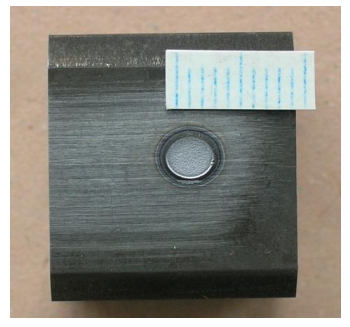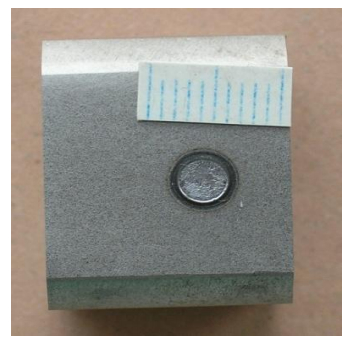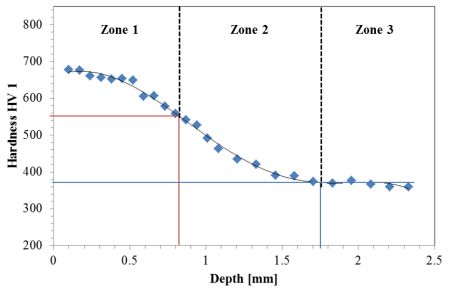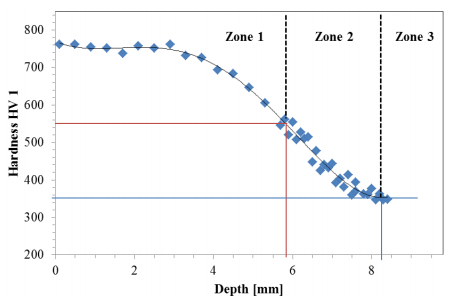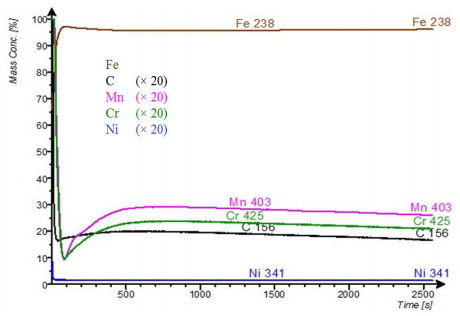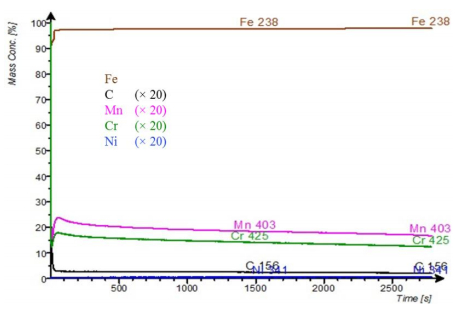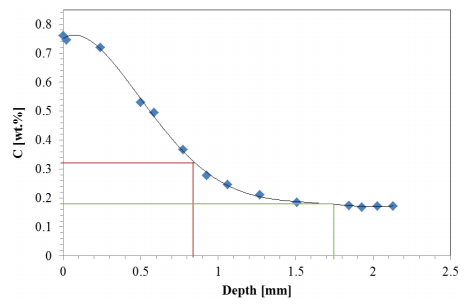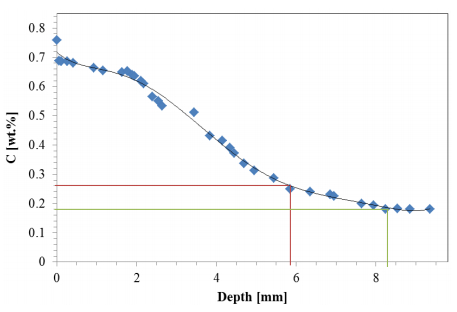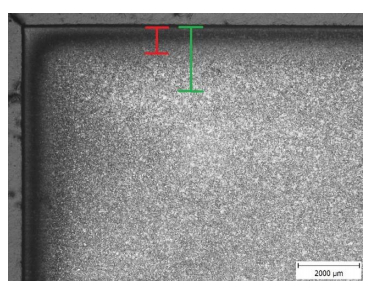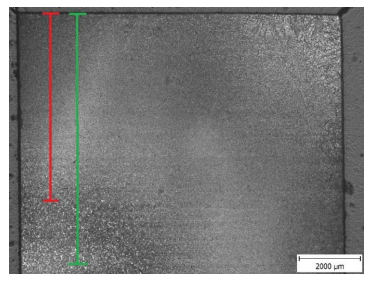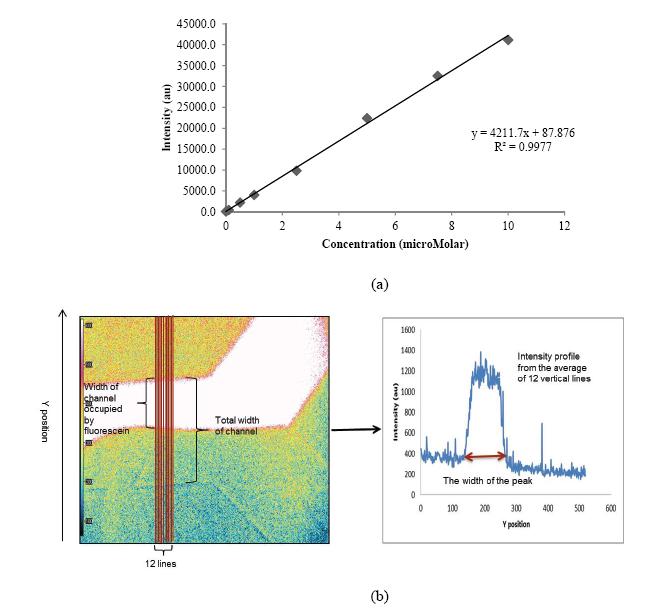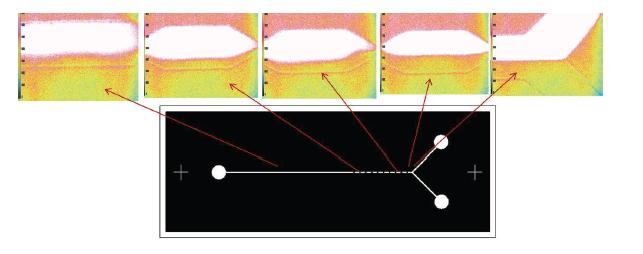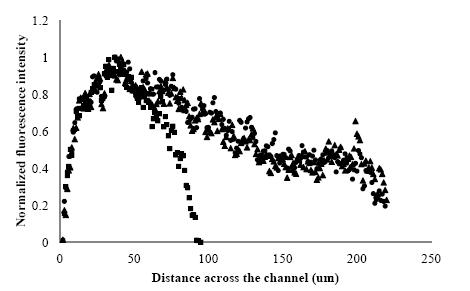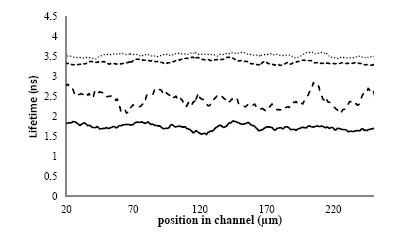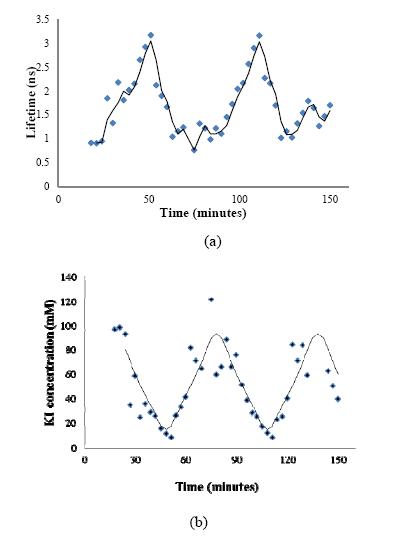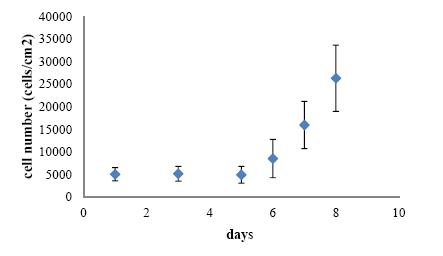1. Introduction
Chemical-heat treatment is a process in which structure and quality modification occurs due to heat treatment accompanied by chemical composition modification of the treated object [1,2]. One of the most significant procedures of this process is carburizing, which means diffusional saturation of the part surface by carbon [3,4] followed by heat treatment—quenching and tempering [5].
Steels with low carbon content (up to 0.2 weight%) are suitable for carburizing. Steel is carburized until reaching eutectic (ca. 0.8 weight%) or over-eutectic carbon concentration. As for the over-eutectic concentration, which means more than 1 weight% carbon content in the layer, the over-eutectic carbides are excluded. These carbides can be dangerous if present at the grain boundaries, since they reduce toughness of the carburized layer considerably [6].
Carburizing (case-hardening) can be done by several means—powder, bath or gas [7]. Other case-hardening possibilities using graphite-containing pastes made from liquid glass and graphite are tested as well [8]. Material surface treated this way helps primarily to increase hardness and at the same time to increase fatigue strength and wear and abrasion resistance. The oxide layer is eliminated as well [1]. For instance the automotive industry takes advantage of case-hardening while producing gearwheels [9] and gearboxes [10,11].
The basic method for measuring the thickness of the carburized layer is the thickness measurement according to the Czech standard ČSN EN ISO 2639 [12] (which is analogous to part of international standard ISO 18203:2016 [13]). This paper deals with the possibility of measuring carburized layer thickness by Glow Discharge Optical Emission Spectroscopy (GDOES) providing information about the chemical composition of the basic material as well.
GDOES is successfully used for quality and thickness determination of all kinds of surface layers, e.g., brake disc friction layers [14], galvanized layers [15], and even organic substances [16]. Profiling GDOES analysis is also suitable for research of very thin layers in nanometrics, e.g., metal nitride coatings which adhere very well to the basic metal, that are chemically stable, very hard and wear resistant and which are decorative [17].
The aim of this paper is to compare the measurement methods mentioned above and to consider whether or not GDOES could replace the up to now mostly used method of the carburized layer thickness determination.
2. Materials and methods
This paper compares the results of three different methods of carburized layer thickness determination, while the carburized layer was prepared by two different ways of case-hardening.
2.1. Experimental materials
Carburizing was performed on the 14220 steel according to the ČSN standard (16MnCr5). Case-hardening was carried out by two means. The sample 1 was carburized by gas. Saturation was carried out at 930 ℃, 220 min, carburizing potential cp = 1.05. Following carbon diffusion was carried out at 930 ℃, cp = 0.78 for 90 min. The sample was then heated up to 830 ℃ for 50 min and oil-quenched. Tempering was carried out at 220 ℃ for 120 min.
The sample 2 was carburized under low pressure. Saturation was carried out at 1020 ℃ for 2 hours and 21 min, diffusion at 1020 ℃ for 1 day, 22 hours and 40 min. After quenching from 860 ℃ for 60 min, the sample 2 was nitrogen cooled with overpressure 14 bar. Tempering was carried out at 150 ℃ for 120 min.
The chemical composition of the basic material was determined thanks to "Bulk" GDOES analysis. The results are given in Table 1.
Table 1. Chemical composition of the basic material (determined by GDOES method).
|
C |
Mn |
Si |
P |
S |
Cr |
Ni |
Mo |
Cu |
Ti |
Co |
Al |
| weight% |
0.18 |
1.20 |
0.23 |
0.012 |
0.003 |
1.10 |
0.083 |
0.011 |
0.180 |
0.001 |
0.003 |
0.031 |
Pictures of both samples with craters after the GDOES analysis (see Figures 1 and 2) were taken using the optical microscopy method.
2.2. Glow Discharge Optical Emission Spectrometry (GDOES)
"Bulk" analyses were carried out on GDOES Spectruma Analytik GmbH (Model GDA 750, 4 mm anode) under the excitation conditions of 700 V and 35 mA; profiling analyses: 996 V, 15 mA.
2.3. Hardness measurement
Hardness measurement was carried out according to Vickers using Leco AMH 2000 machine in accordance with the ČSN EN ISO 2639 standard. Measurement conditions: used stress HV 1 (9.81 N), limit value 550 HV 1, distance between adjacent indentations at least 2.5 multiple of their diagonal and the difference between the indentations distances max. 0.1 mm.
Carburized layer depth is determined for covenanted hardness value 550 HV 1 according to the distance from the surface, measured in two lines [12].
2.4. Optical microscopy
The cross sections of the samples were observed by the Olympus IX70 optical microscope.
3. Results and discussion
3.1. Results of hardness measurement
The hardness measurement of both samples was carried out using the method according to Vickers and according to the parameters of ČSN EN ISO 2639 standard. The results are given in the graphs (Figures 3 and 4).
According to the mentioned standard, the carburized layer thickness corresponds to HV 1 hardness of 550 HV. Looking at the graph (the red line), it is clear that using this standardized method the carburized layer of the sample 1 is around 0.82 mm, as for the sample 2, it is approximately 5.8 mm and in Figures 3 and 4 is assigned as Zone 1.
This method of measurement also determined the limit value when the hardness was already stable (the blue line). It can be assumed that in such depth (1.75 mm for sample 1 and 8.25 mm for sample 2) there is only the basic material which is not carbon-enriched and in Figures 3 and 4 is assigned as Zone 3. The region between Zone 1 and Zone 3 zones assigned as Zone 2 can be considered as transitional. The hardness values in transitional zone (Zone 2) are higher than the hardness of basic material but do not reach the level 550 HV.
3.2. GDOES results
The carburized layer of the sample 1 was assessed by profiling GDOES analysis (Figure 5). After 2500 seconds of analyses (in depth approximately 200 µm), an important redeposition on the edge of the crater of the dedusted material occurred, introducing a short circuit. It led to the automatic suspension of the analysis. Therefore 0.6 mm of the layer was ground and the analysis was repeated (Figure 6).
After another 1.4 mm grinding of the carburized layer (Figure 7), the carbon concentration was stable (0.18 weight%), which corresponds to the carbon content determined by the "Bulk" GDOES analysis of the basic material (Table 1). The carbon, manganese, chromium and nickel concentration shown by the GDOES analysis records (Figures 5-7) must be divided by 20, since as these concentrations are very low, their measuring scale was adapted for better clarity. The number shown over the curve of each element is the wavelength at which the element was analysed (e.g., Mn: 403 nm).
Since the profiling GDOES analysis is time demanding, it was replaced by another method: repeated "Bulk" GDOES analysis with progressive grinding.
Using this method, the "Bulk" analysis was repeated after a part of the layer was ground using HK 200 speed grinder (sand paper P180). The analysis was therefore less time consuming. In the following graphs (Figures 8 and 9), carbon concentrations according to the measurement depth are given. The height of the samples was measured by a micrometer after each grinding step.
It was found that stable carbon concentration (ca. 0.18 weight%) and therefore stable concentration of the basic material appeared at ca. 1.75 mm depth in the case of the sample 1 (green line) and at 8.25 mm depth in the case of the sample 2.
These results imply that the thickness of the carbonised layer is not the same as the thickness of the carburized layer conform to the standard. As it is evident from Figure 8 (red line), in the case of sample 1 the carbon concentration corresponded to ca. 0.32 weight% in the depth of 0.82 mm (standardised method for measuring the carburized layer thickness used), while in the case of sample 2, it was 0.26 weight% in the depth of 5.8 mm (Figure 9). The depth of stable HV 1 corresponds quite precisely to the depth of stable carbon concentration determined by GDOES.
3.3. Optical microscopy results
The samples were analysed in cross section using optical microscopy method (Figures 10 and 11). From the metallographic point of view, the thickness of the carburized layer should be determined from the middle of the transitional layer, which is hard to determine precisely. However, metallographic preparation of samples is necessary for HV 1 hardness measuring and on the prepared metallographic grindings the regularity of carburized layer and its microstructure can be observed.
During the analysis, pictures of both samples have been taken. They show carburized layers according to 550 HV 1 hardness measurement (red lines) and total thickness of carbon saturation according to "Bulk" analysis with gradual grindings (green lines).
4. Conclusion
The main aim of this paper was to consider the possibilities of using GDOES analysis for carburized layer thickness determination. The thickness is determined by the thickness measurement method according to Vickers in accordance with the ČSN EN ISO 2639 standard. The limit value is usually 550 HV 1. It was found that the carburized layer thickness measured by this method is lower than the thickness measured by GDOES. However, this value corresponds to the distance from the surface, where HV 1 is already stable. The difference of these values is the result of different principles of these methods. GDOES evaluates only the carbon content in the layer and not the layer preparation technology and the heat treatment of samples. From practical point of view the carbon content measured with GDOES is suitable indicator for the determination of the thickness of carburized layer. This method cannot be used for determination of carbon content which corresponds to hardness 550 HV 1 because this parameter is influenced not only by the amount of carbon but also by the presence of other alloying elements and thermal treatment process if used.
Since the thickness of carburized layers is important, only "Bulk" mode of GDOES analysis with gradual grindings is suitable. Profile GDOES analysis is not suitable for this type of samples. Metallographic analysis offers only indicative information about the carburized layer thickness.
Acknowledgements
This work was supported by project No. LO1203 "Regional Materials Science and Technology Centre—Feasibility Program" funded by Ministry of Education, Youth and Sports of the Czech Republic.
Conflict of interest
The authors declare no conflict of interest.









 DownLoad:
DownLoad: 